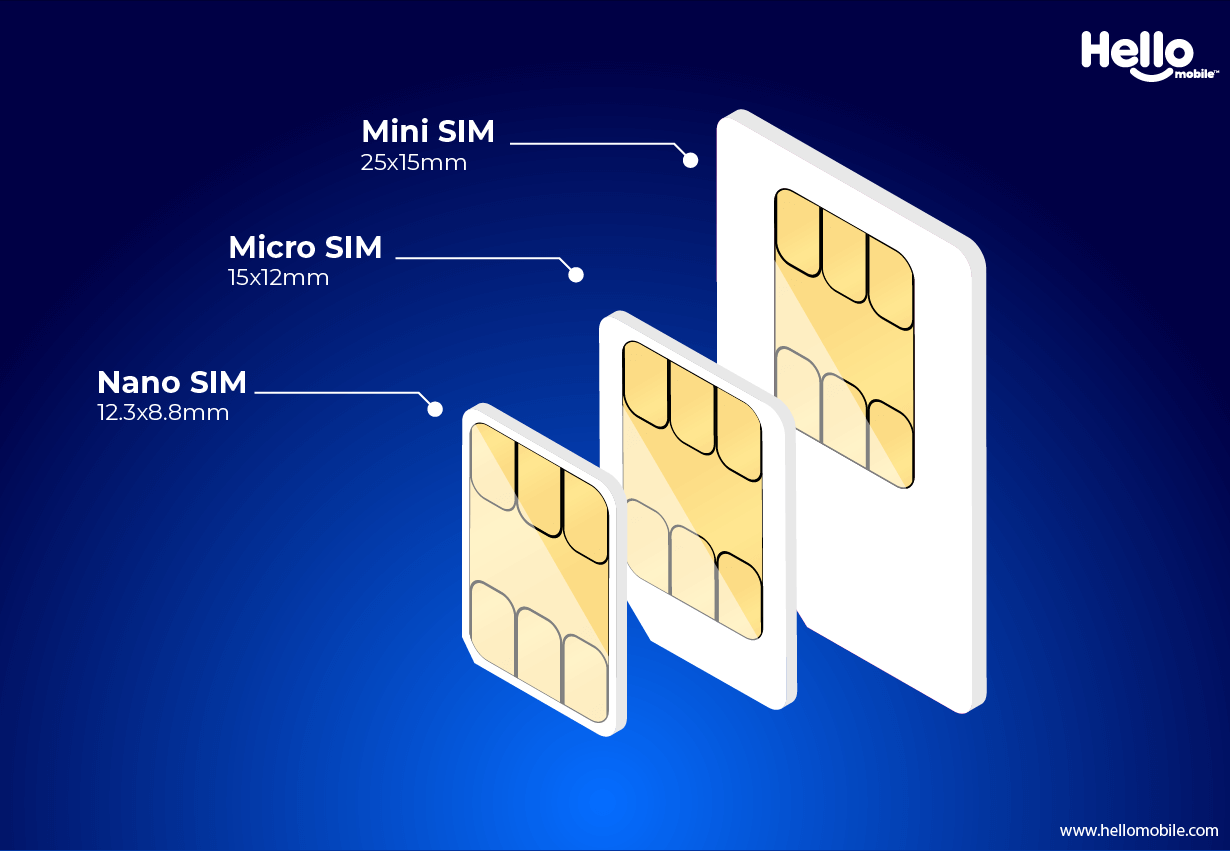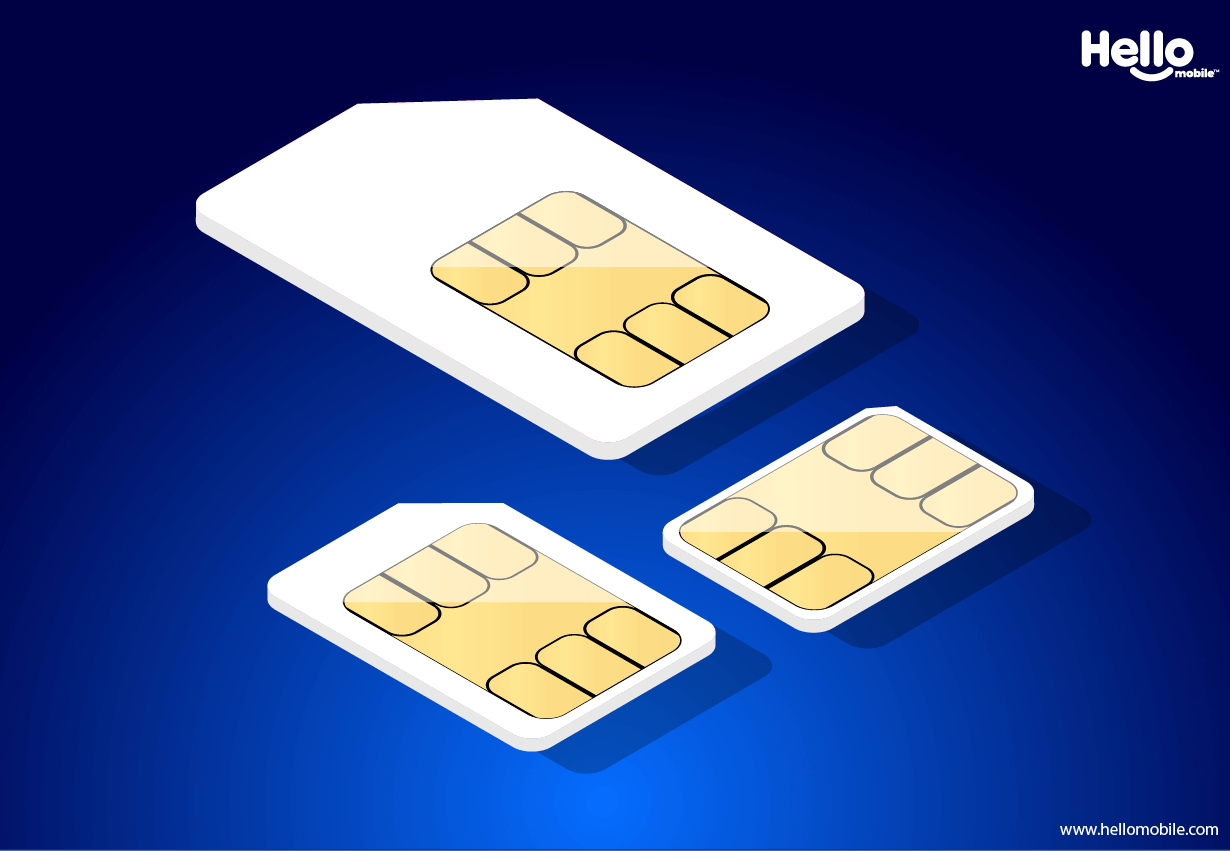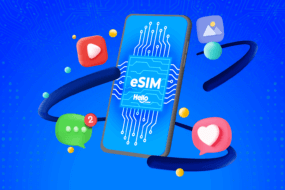
Many things, including SIM Cards and phones, have evolved in the last few years since 1991 when they were first introduced, prompting you to ask why there are distinct SIM Card kinds and whether it matters – well, does it?
As opposed to two decades ago, when all SIM Cards were one-size-fits-all and as big as a credit card, today’s cards come in a variety of (way smaller) shapes and sizes. SIM Cards, like everything else, have undergone several changes that have resulted in a surprising array of sizes and even features, including:
- Standard SIM (mini-SIM)
- Micro SIM
- Nano SIM
- eSIM
While the size of the cards varies, the chip and information on it stay the same – so where’s the difference? Let’s dive right in!
What is a SIM Card?
Before diving into the more technical phrases and topics, it may be helpful to understand what a SIM Card is – don’t worry, I gotchu. SIM cards may be thought of as small, portable memory devices that store information about your phone, computer, or tablet and cellular service and allow your system carrier to send you a personal phone bill.
You may have also seen the various digits on it, the 17-digit number represents your:
- Country code
- Your system carrier (AT&T, T-Mobile, or Verizon)
- A unique code just for you
SIM cards are the brain and heart of your phone, giving it everything it needs to work and allowing your cellular carrier to provide you with a customized signal.
Already know what SIM your phone needs? No worries, you will get an option at the checkout when you buy one of our plans here.
Which SIM Card Is Right for Me?
SIM card sizes have decreased over time, with excess plastic surrounding the circuit board being removed. They quickly (well…) discovered the plastic was unneeded and only took up space that might be used, for instance, for a bigger battery.
While the physical size of the chip shrank from a credit card to a Nano card used in iPhones, the information it contained remained the same.
As a general rule, you may use any SIM card in any phone; however, some models may need that you don’t remove as much of the original plastic or use an adapter if you’ve already done so – don’t worry, at Hello Mobile, we have an extensive SIM card starter kit to help you out with that.

What’s a Standard SIM Card?
Despite having been the most widely used SIM card type initially since its 1996 introduction, regular SIMs are increasingly becoming rare as time goes on. Some older phones out there still utilize the larger version, but most newer phones from the last decade have adopted the smaller one.
This means if you’ve bought a phone within the past few years, it will likely use a smaller SIM card.
What’s a Micro SIM Card?
Micro SIM cards made their debut in 2003, but just like the standard SIM cards, they’ve been more uncommon in newly released mobile devices. Therefore, if you purchased a phone a few years ago that is too new for a conventional SIM card; it may be compatible with the micro-SIM card.
What’s a Nano SIM Card?
Nano SIM Cards are the smallest available, yet they pack a powerful punch despite their small size. Since there is hardly any plastic to conceal the chip with just enough to insulate it to avoid short circuits, though they hold just as much info as the others.
These days, newer phones almost exclusively utilize Nano SIM cards, so if you’re in the market for a newer model, you can be sure that it will support your preferred network – check our extensive online store, and you may just fall in love.
What is an eSIM?
Didn’t think it could go any smaller than the Nano one? Well, it certainly can. eSIMs are already embedded in your phone, so you can’t insert or remove anything. Instead, you can just connect with a wireless carrier and have them activate the eSIM over the phone.
If you’re curious about the technical specs of iOS and Android, click here.
Here are some of their benefits:
- More space in the phone for some cool techy stuff
- More comfort since you don’t have to fiddle around with the SIM slot anymore
- You don’t have to go to stores to get help inserting it
- Easier to switch carriers (only a few carriers are currently supporting it, though it will likely be in the future)
Feel like you’re eating up your data too quickly and need something unlimited without breaking the bank? Check out Hello Mobile’s no-strings-attached options.

Compare Micro SIM and Nano SIM: What’s The Difference?
In a nutshell, the Micro SIM and Nano SIM are essentially the same thing, differing only in their sizes – in this case, bigger is not always better.
Both the Micro SIM and the Nano SIM are defined by their form factors, with the former as the third (3FF) and the latter as the fourth (4FF), though the Nano SIM is also 15% thinner than the Micro SIM.
Why Your Smartphone Needs a Nano SIM Card
Given that size does not affect functioning, having a smaller SIM Card frees up space for other valuable components, such as a larger battery. This is one of the reasons why all newly released smartphones exclusively have Nano SIM cards, you know… like the ones in our store *hint hint*.
Wondering If a SIM Card Saves Text Messages? Here Are the Facts!
One of the most common fears when switching either wireless carriers or phones is losing valuable messages from loved ones.
Text messages or SMS (Short Message Service) are often stored on the phone memory or in a cloud service like Apple’s iCloud. Even though it’s not common practice, SIM cards may sometimes save text messages and depend on your device settings (unless you changed it, it would automatically save everything to your phone, though).
It’s surprising, but that little chip can carry up to 128 kilobytes of data, enough to store phone numbers (up to 250), data consumption, bills, and PINs. However, iPhones cannot store anything on SIM cards since everything is kept on iCloud storage.
Still, scared to lose everything? Don’t worry. Hello Mobile makes it easy by letting you keep everything but the high bill. Got curious? Head over here to check out Hello Mobile’s plans.
Now that you know more about SIM cards, what about phones? Head over to our article that talks about the pros and cons of iPhone and Android.
Does My SIM Card Really Save Pictures?
If your SIM card can store data like messages and bill information, it’s natural also to consider that it could be storing pictures. However, SIM cards can’t store any pictures or phones, only data in the form of numbers and text.
So, if you’re looking to switch your phone because you just fell in love with one, consider backing it up on iCloud if you have an iPhone. For non-apple phones, different backup apps and programs like Google Drive or Google Drive Samsung Cloud of Samsung phones can help transition to a new phone.









